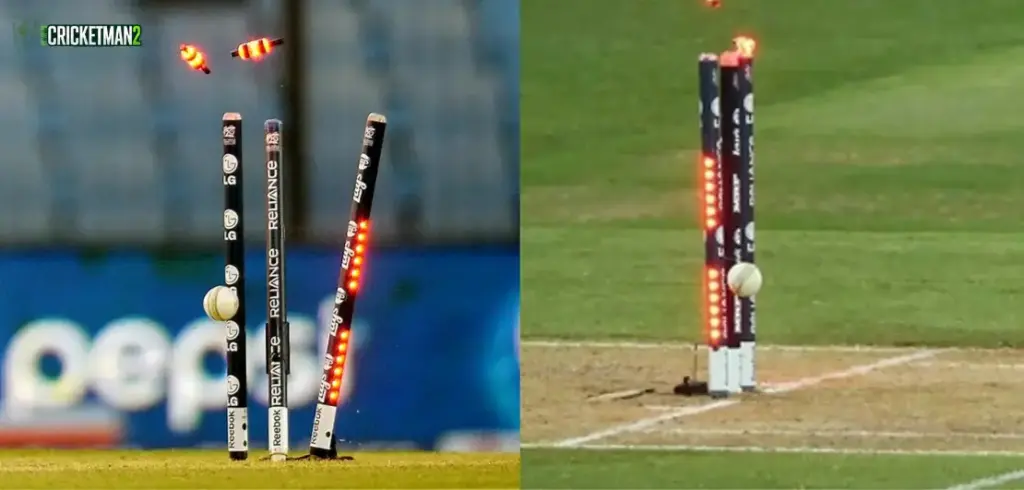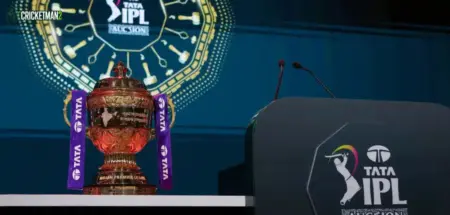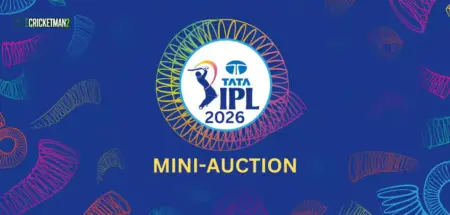The Indian Premier League (IPL) is known for its thrilling action, world-class players, and technological innovations — one of which is the LED stumps and bails that light up instantly when a wicket falls. These high-tech wickets not only add visual excitement but also improve decision accuracy for umpires. However, many fans are often shocked when they learn the real cost of these LED stumps.
What Are LED Stumps and Bails?
LED stumps, also called Zing wickets, are advanced cricket stumps fitted with microprocessors, sensors, and LED lights. Whenever the bails are dislodged, these sensors detect the movement and make the stumps flash within 1/1000th of a second.
This instant lighting helps umpires confirm dismissals in tight situations like run-outs, stumpings, and close bowled decisions, while giving fans a stunning visual treat.
Read Also:- IPL 2026 Auction Players List
When Were LED Stumps Introduced in Cricket?
| Year | Tournament/Event | Introduction Detail |
|---|---|---|
| 2008 | ODI (AUS vs SA)** | First use of stump cameras |
| 2013 | Big Bash League (BBL) | First use of LED stumps and bails |
| 2014 | ICC T20 World Cup (Bangladesh)** | First use in international cricket |
| 2016 | IPL Debut | Introduced in the Indian Premier League |
Since then, LED stumps have become a permanent part of top cricket tournaments like the IPL, ICC World Cups, BBL, PSL, and even day-night Test matches.
Cost of LED Stumps in IPL and International Cricket
LED stumps are among the most expensive equipment in cricket. Unlike traditional wooden stumps that cost less than ₹2,000 per set, these advanced systems cost as much as a luxury car!
| Type | Description | Estimated Cost |
|---|---|---|
| Single LED Stump | One piece with embedded sensors and LED system | ₹8–10 lakh |
| Full Set (3 stumps + 2 bails) | Standard set used in matches | ₹30–41 lakh |
| Advanced or Upgraded Set (High-end tech) | With cameras, sensors, and radio links | ₹50–70 lakh |
| Regular Wooden Stumps | Used in domestic/local matches | ₹1,000–₹2,000 |
In the IPL, the Board of Control for Cricket in India (BCCI) does not buy these directly. Instead, it leases the stumps from Zing International, the Australian company that manufactures them. The cost per match is estimated at around ₹2.9–3 lakh, which includes maintenance and logistics.
Who Manufactures LED Stumps?
The Zing International company from Adelaide, Australia, is the official manufacturer of LED stumps used in the IPL and ICC tournaments.
Other companies like StumpVision and Intelliconn also produce similar high-tech systems, priced between ₹4–16 lakh depending on technology and country of supply.
Zing’s system, known as the “Zings Patented Electronic Wicket System,” includes:
- Composite stumps made from polyurethane and fibreglass
- Low-voltage hidden batteries
- In-built microprocessors and wireless sensors
- Shock-absorbing bumpers for protection during fast deliveries
How Do LED Stumps Work?
The mechanism behind these stumps is fascinating:
- Microprocessor Sensors: Detect when the bails are dislodged.
- Instant Light Activation: LED lights glow immediately (within 1/1000th second).
- Radio Signal Transmission: The bail sends a signal to the stumps to activate synchronized lighting.
- Durability & Impact Resistance: Designed to handle impacts from balls traveling at 150 km/h or more.
This precision engineering ensures the stumps function perfectly in all weather and lighting conditions — from day matches to floodlit IPL thrillers.
Arshdeep Singh and the Viral IPL Stump Moment
The price of LED stumps gained massive attention during the IPL 2023 season, when Punjab Kings pacer Arshdeep Singh broke two LED stumps in a single over against Mumbai Indians.
Fans were shocked to learn that each broken stump cost around ₹8–10 lakh, making that over worth nearly ₹20 lakh in damage!
While expensive, moments like these have become an iconic part of IPL’s spectacle.
Why Are LED Stumps So Expensive?
The price tag is justified by the technology and materials used.
| Feature | Description |
|---|---|
| High-End Sensors | Detect even the slightest bail movement |
| Microprocessors | Control instant lighting and data signals |
| Durable Composite Material | Withstands high-speed ball impacts |
| Battery System | Hidden low-voltage rechargeable batteries |
| Precision Manufacturing | Similar to medical or aerospace-grade systems |
| Maintenance & Leasing Cost | Regular servicing and replacements add to expenses |
Benefits of LED Stumps
- Helps umpires make accurate, fast decisions
- Enhances TV and fan experience with instant illumination
- Supports DRS (Decision Review System) with synced visuals
- Adds to the modern, high-tech appeal of cricket
Read Also:- IPL All Team Coaches and Their Salaries
Future of LED Stumps
With the IPL leading the way in cricket innovation, the future could see further integration of AI and data analytics into LED stumps — possibly capturing real-time impact data, ball speed, and stump mic clarity.
As technology continues to evolve, the price may reduce slightly, but for now, these stumps remain symbols of luxury and precision in modern cricket.
Conclusion
The LED stumps used in the IPL represent a blend of innovation, accuracy, and entertainment. Costing between ₹30 to ₹70 lakh per set, these high-tech wickets have transformed cricket from a traditional sport into a technological spectacle.
From their lightning-fast illumination to their role in ensuring fair play, LED stumps have become one of cricket’s most iconic innovations — and as players like Arshdeep Singh keep shattering them, their value (and our fascination) only grows stronger.
FAQs
Q1. What is the price of IPL stumps?
→ The cost of LED stumps used in the IPL ranges from ₹30 lakh to ₹70 lakh per set, depending on the technology.
Q2. Who makes the LED stumps?
→ The stumps are manufactured by Zing International, an Australian company based in Adelaide.
Q3. When were LED stumps first used?
→ They were first used in the 2013 Big Bash League and introduced in international cricket in 2014.
Q4. Why are they so expensive?
→ The stumps contain LED lights, sensors, microprocessors, and cameras that make them high-precision tools for modern cricket.




